Review: Versatile, affordable titanium in the Litespeed Ultimate G2 gravel bike
This article originally appeared on Velo News
There are many reasons that titanium is a great material for a gravel bike, and there are also a few that make it challenging. If you’re OK with meeting the metal’s superlatives and shortcomings right in the middle, then one of these shiny silver bikes might be for you.
After spending six weeks on Litespeed’s new gravel rig, the Ultimate G2, I experienced all the highs and lows of riding gravel on a titanium bike, the former far outnumbering the latter.
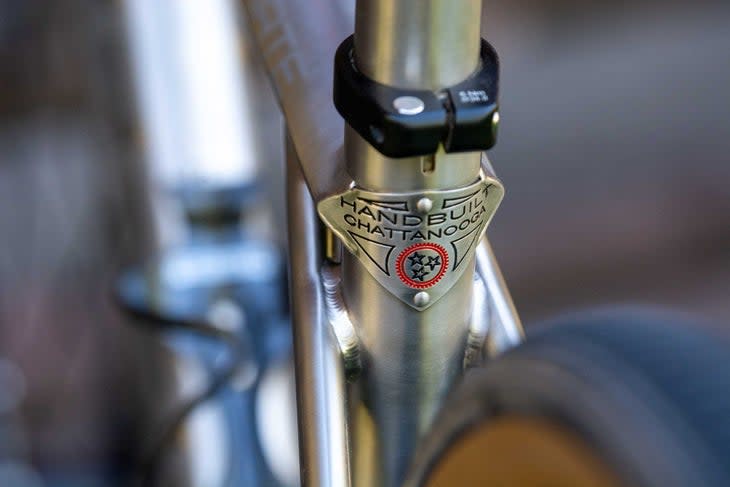
Some of the G2’s high notes even preceded my riding it: Litespeed bikes -- which belong to the American Bicycling Group family -- are designed and crafted in the U.S., and for titanium, they are much more reasonably priced than other U.S. makers, such as Moots and Mosaic.
As has come to be the case with new gravel bikes hitting the market, the folks at Litespeed promise the world in the G2 -- “ready for race day--and every day in between” -- so I tried to put the bike to the appropriate tests.
I first threw a leg over the G2 at SBT GRVL, where I time trialed to third place in the 60-mile ‘Red’ race. I rode the bike on some of my go-to gravel routes around Boulder and took it above treeline in Crested Butte.
The denouement of our time together was a big mixed-terrain loop, half of which was smooth tarmac between Boulder and Grand County via Rocky Mountain National Park and the other half a turn-of-the-century railway route (now a rocky dirt road) over the Continental Divide.
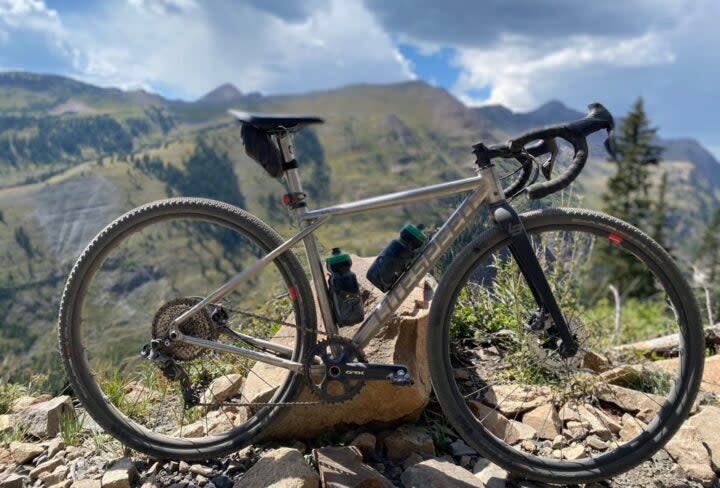
Ultimate --> Ultimate Gravel --> Ultimate G2
Litespeed fans will be familiar with the “Ultimate” lineage. Litespeed brought the first Ultimate to market in 1987 as its flagship road racing bike, and over the past two decades, the bike has made some notable appearances. In 2002, Robbie McEwan won two Tour stages on an Ultimate.
In 2019, Litespeed debuted the Ultimate Gravel, a riff on the original design that included features for gravel like more tire clearance and compliance, both made possible by the swooping seat stays. The brand stayed with its hallmark use of 3AL/2.5V cold-worked titanium tubing and made the gravel bike even stiffer with a rounded, square-shaped top tube.
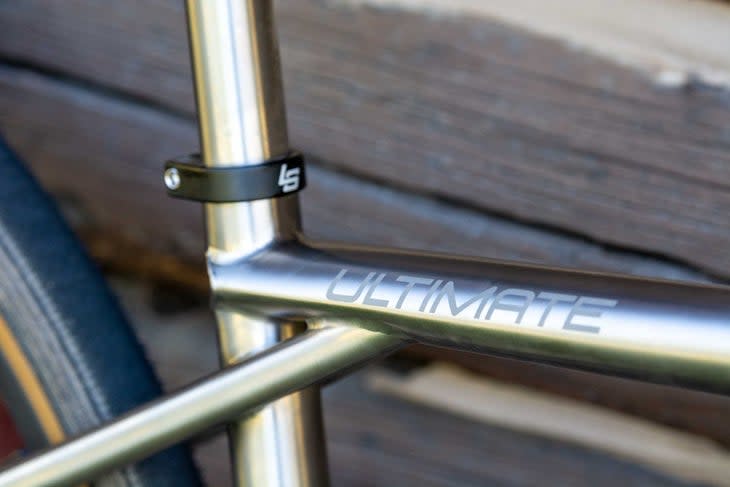
The Ultimate G2 features the same 3AL/2.5V shaped tubeset and rear triangle geo as the Ultimate Gravel (425mm chainstays) with one major redesign: the G2 has interlocked dropped seat stays versus the swept stays of the original Ultimate Gravel. On the new bike, the seat stays extend upward beyond the seat tube and into the aft of the top tube.
This achieves two things. One, the design creates more space for tire clearance. And two, it’s stiffer.
According to Jay Prasuhn, American Bicycling Group’s marketing content specialist, the new seat stays are designed to prevent some of lateral stiffness loss in the old bike.
“The old Ultimate’s stays weren’t super connected, so there would be some lateral stiffness loss when out of the saddle,” he said. “The new stays are designed to be stiffer. They’re not swept, they’re not straight but ovalized, so you get vertical compliance but you don’t lose stiffness in terms of power transfer.”
The G2 can accommodate 48mm tires on 700c wheels (and 55mm on 650b). Another update from the Ultimate to the Ultimate G2 is a slightly slacker -- from 71-72 degrees depending on size -- head tube angle for improved front end tracking.
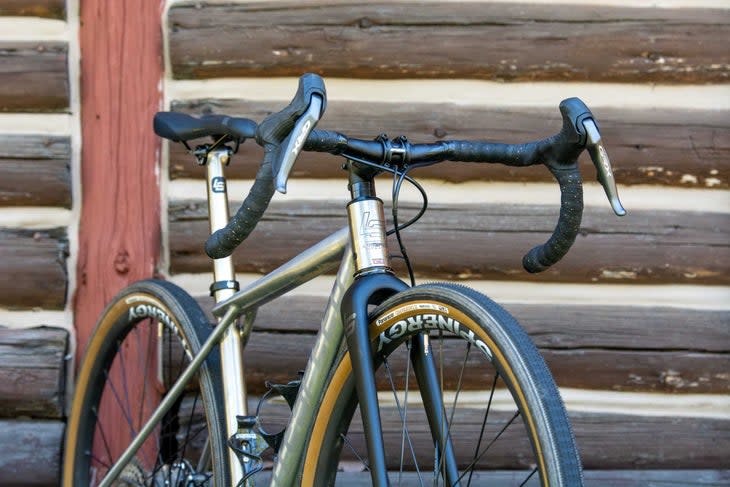
Putting the G2 2 the test
My first ride on the G2 was, unsurprisingly, the most challenging.
As has become tradition (one that I think I am ready to retire), I picked up the G2 the day before a gravel race, took it on one shakeout ride, and then lined up at the start. I had no idea how this bike would perform at race pace over the fast gravel roads in Steamboat Springs.
From the gun, I felt like I could not make the G2 go fast enough. Which was interesting because I thought I would feel great after a big bike tour in the Alps the week before.
It became clear quickly that “just” 60 miles was going to be a struggle. Even on the very first climb, I felt like I was pedaling through molasses. And climbing is my forte.
(Sidenote: Doesn’t everything in Steamboat feel like some in-between never-ending undulation that never really delivers a great steep up or down? That didn’t help).
Frustrated, I mashed against the pedals and gave up on riding with anyone. True-to-form, it was a time trial to the finish. Maybe I was tired from Europe, maybe I don’t like riding in Steamboat, however I was also pretty convinced it had something to do with the bike.
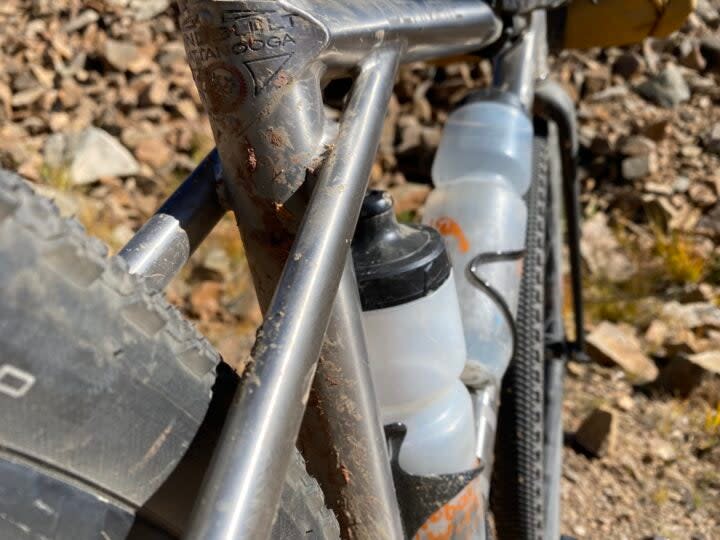
And, it did, of course -- titanium bikes don’t ride like their carbon step-siblings, which is what I’m used to.
They will always be heavier -- the medium G2 frame weighs 1,430 grams -- and nowhere is this more evident than during a race. With Litespeed touting the G2 as a race bike, I think I was expecting something zippier with a little more giddy-up. Instead, I was working harder for the same result.
After SBT GRVL I switched out the wheels on the G2 because I had a feeling they weren’t helping. Off came the alloy Spinergy GX wheelset and on went the Reserve 25|GR carbon rims. The weight difference was incidental (a scant 100g), but the change made the G2 feel like a different bike.
I happily pedaled it around Boulder on my normal gravel loops and it felt way less sluggish. Now I was able to discern between “this bike is slow” and “this bike takes a minute to rev up.”
Once running, the G2 purrs like a diesel engine.
For a non-race scenario, I took the G2 for a very long ride over every type of surface imaginable. It wasn’t a lollygag by any means -- I was riding to a wedding so time was of the essence. The first leg was about 90 percent pavement, from Boulder to Estes Park and then up and over 12,000 feet in Rocky Mountain National Park. In total, it was a century with 10,000 feet of climbing.
I made it to the church on time.
In my opinion, a gravel bike has to behave well on pavement. Part of the beauty of gravel is linking up all surfaces. I’m happy to report that the G2 is very enjoyable to ride on the road, owing to the all-day comfort of titanium and also the fairly aggressive geometry.
Of note: I had quite a few PR’s on the descent down Trail Ridge Road in RMNP.
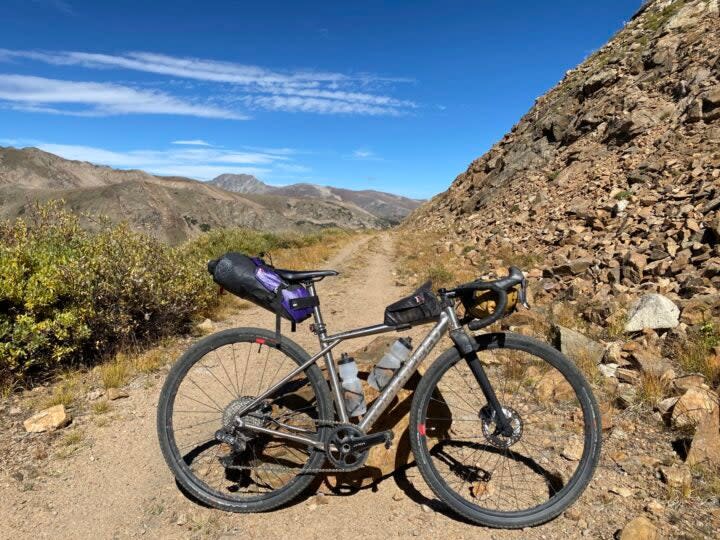
On the ride back to Boulder after the wedding, I took a decidedly rougher route, climbing over Corona, or Rollins Pass, which includes a sketch crossing of a rickety old railroad trestle and a fairly miserable descent on a road filled with small boulders of varying shapes and sizes.
I’d only ever done this ride on a mountain bike, and even then, it was no fun.
However, the G2 plowed through the chunder much better than I expected. In fact, I’d say that soaking up uncomfortable vibrations is one of the G2’s most attractive features. If you frequently ride rough stuff (I do) or are sensitive to the brain-rattling of carbon on washboards (I am), titanium is an excellent option.
I think I liked the bike better descending off Rollins Pass than I did picking my way slowly through the rocks on the ascent. A friend put it this way: “if Ti is too good at being cushy at slow speed climbing, it would be pretty flexy on the descents … as in uncontrollable.”
I did not crash.
My 175-mile round trip to my friend’s wedding was great testament to the versatility of the Ultimate G2. It’s a workhorse of a gravel bike on any surface. Once you get used to a bit of a slower start out of the gate, there are no problems with forward momentum. Although its heft creates a slight deficit going uphill, the G2 is pretty speedy once it gets going, and truly fast when it’s going downhill.
It’s a great bike for someone who wants the comfort, quality, and versatility of titanium. And, given Litespeed’s seemingly limitless build kit and spec options, you can fine-tune the G2 to be the exact machine you want it to be.
Options, specs, and colors
My test bike was set up with Shimano GRX 810 Di2 1x, the Spinergy GX wheels, a Litespeed carbon fork, and a titanium seatpost (available as an upgrade).
As with all other Litespeed builds, the customization options are nearly endless. From drivetrain to wheelset to seatpost to tire and saddle choices, there are many ways to make the G2 work best for you.
Pricing starts at $4,950 for a bike with Shimano GRX 600 mechanical components and Sun Ringle Charger Comp wheels.
The Ultimate G2 frameset (frame and fork) is priced at $3,095. All build options of the Ultimate G2 can be configured and ordered direct online at Litespeed.com, or special ordered through Litespeed's global network of retailers.
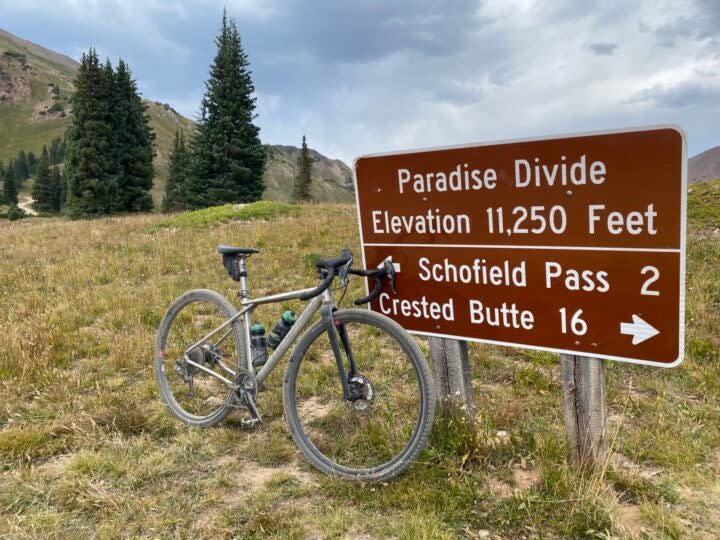
The bike is built standard with three bottle mount locations, but top tube bosses, bosses for rear rack application, a threaded T47 bottom bracket, and etched logo options are also available.
As part of the G2 debut, Litespeed is breaking its own mold with a few different stylization options.
First is Ceramic Color Coating (CCC), a process that puts cosmetic ceramic color treatment on the frame's graphics, along with a CCC-treated Cane Creek 40 Series headset, seat collar, and color-matched bar tape. This upgrade option costs $495 and is available in sapphire, hot pink, and blue mint.
Another option for the Ultimate G2 is Litespeed's TiDize color anodization upgrade, which includes new blue, purple, and gold hues. This upgrade includes a color-matched anodized Wolf Tooth headset and seat collar. Last on the list of palette enhancers, a range of eight complimentary vinyl logo options (including yellow, neon pink, and pastel orange) are available for a truly individualized look and style.
The Ultimate G2 is available in sizes XS-XL.
For exclusive access to all of our fitness, gear, adventure, and travel stories, plus discounts on trips, events, and gear, sign up for Outside+ today.

